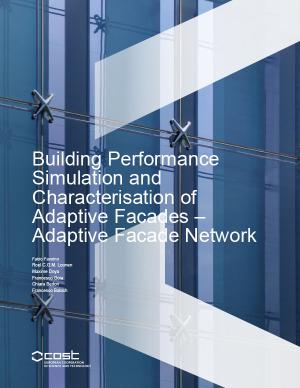Hosted by
Building Performance Simulation and Characterisation of Adaptive Facades: Adaptive Facade Network
Synopsis
The book “Performance Simulation and Characterisation of Adaptive Facades” responds to the need of providing a general framework, standardised and recognised methods and tools to evaluate the performance of adaptive facades in a quantitative way, by means of numerical and experimental methods, in different domains of interest. This book represents the main outcome of the activities of the Working Group 2 of the COST Action TU1403 Adaptive Façades Network, “Components performance and characterisation methods”, by integrating in one publication the main deliverables of WG2 described in the Memorandum of Understanding: D 2.1. Report on current adaptive facades modelling techniques; D 2.4. Report on the validation of developed simulation tools and models; D 2.5. Report on the developed experimental procedures. These are extended by additional sections regarding structural aspects and key performance indicators for adaptive façade systems.
This book is a comprehensive review of different areas of research on adaptive façade systems and provides both general and specific knowledge about numerical and experimental research methods in this field. The fast pace at which building technologies and materials develop, is slowly but constantly followed by the development of numerical and experimental methods and tools to quantify their performance.
Therefore this book focuses primarily on general methods and requirements, in an attempt to provide a coherent picture of current and near future possibilities to simulate and characterise the performance of adaptive facades in different domains, which could remain relevant in the coming years. In addition, specific know-how on selected cases is also presented, as a way to clarify and apply the more general approaches and methods described. The present book is published to support practitioners, researchers and students who are interested in designing, researching, and integrating adaptive façade systems in buildings. It targets both the academic and the not-academic sectors, and intends to contribute positively to an increased market penetration of adaptive façade systems, components and materials, aimed at rationalising energy and material resources while achieving a high standard of indoor environmental quality, health and safety in the built environment.

